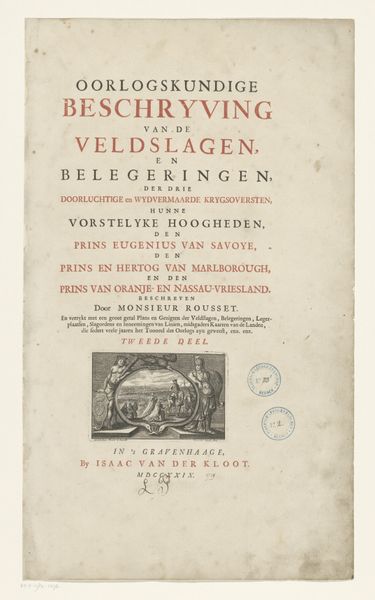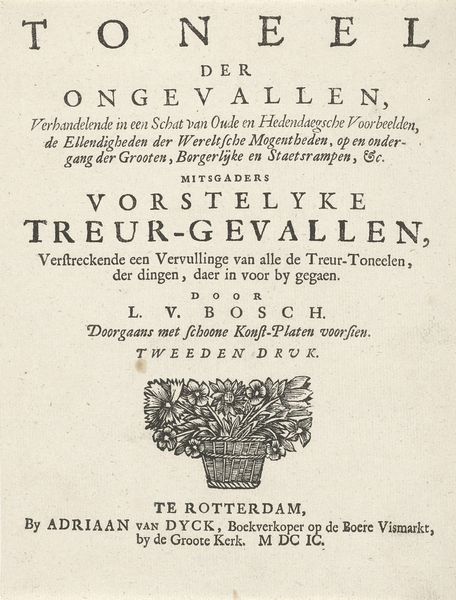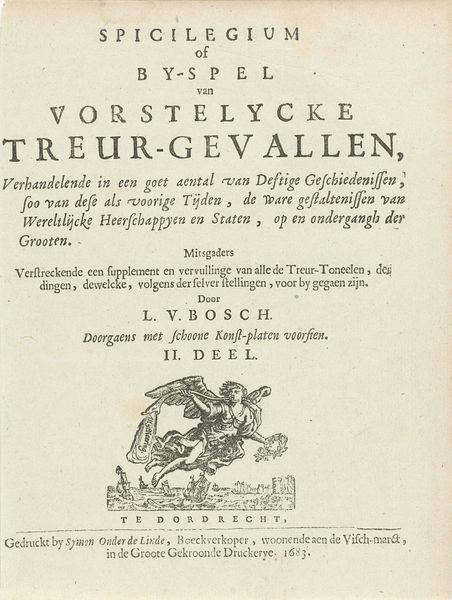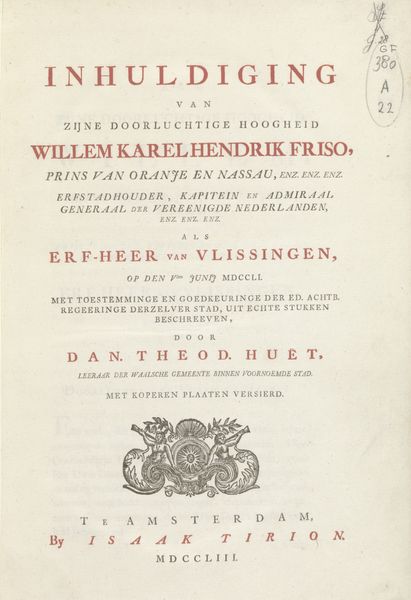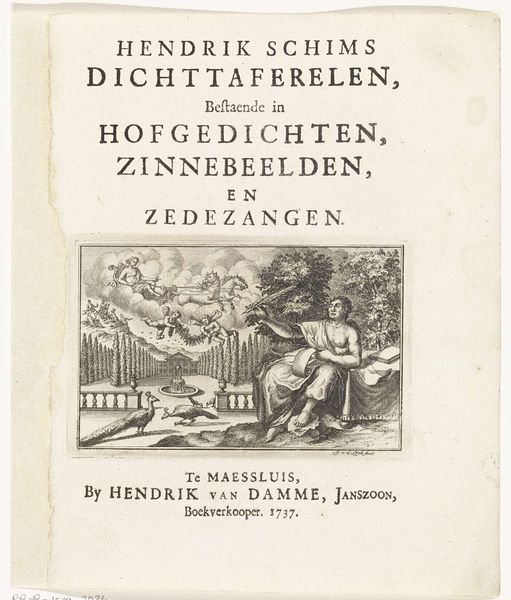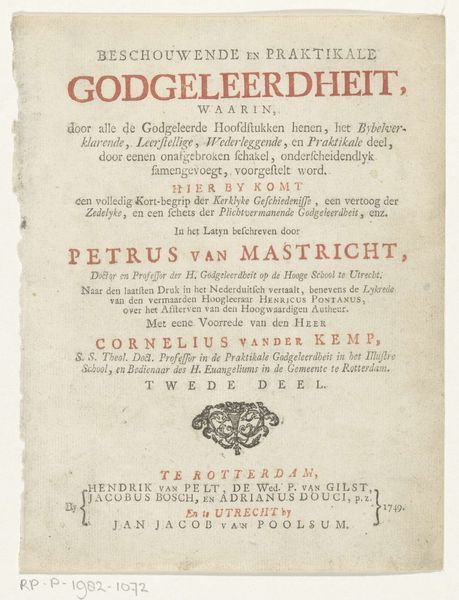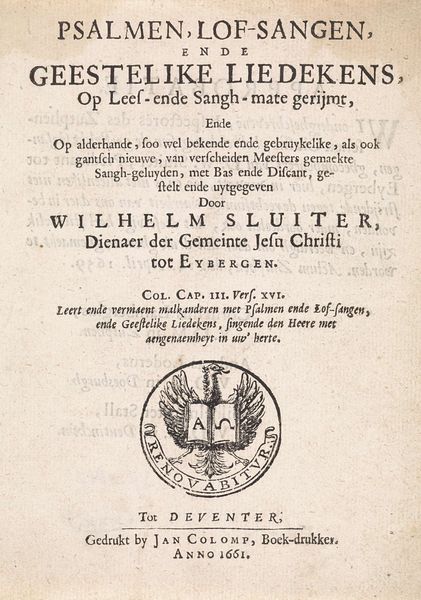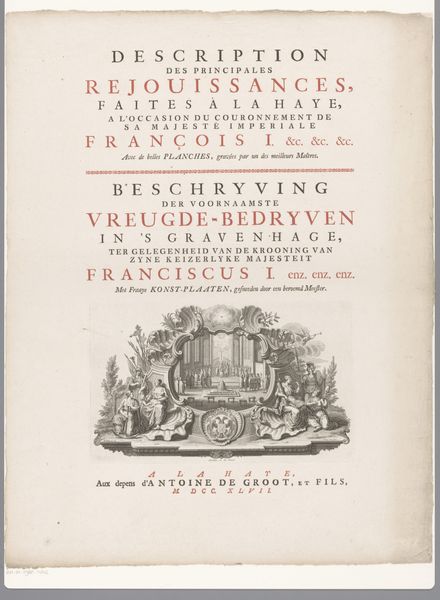![Titelpagina voor: [Jean] du Mont, Oorlogskundige beschryving van de veldslagen en belegeringen, der drie (...) wydvermaarde krygsoversten (...) den Prins Eugenius van Savoye, den (...) Hertog van Marlborough, en den Prins van Oranje en Nassau-Vriesland, Tweede Deel, 's-Gravenhage 1729 by Leonard Schenk](/_next/image?url=https%3A%2F%2Fd2w8kbdekdi1gv.cloudfront.net%2FeyJidWNrZXQiOiAiYXJ0ZXJhLWltYWdlcy1idWNrZXQiLCAia2V5IjogImFydHdvcmtzL2U1MDg2YTY5LWZmMjgtNGI1MC1iYTM5LTkzMzYyMjliZmZkNS9lNTA4NmE2OS1mZjI4LTRiNTAtYmEzOS05MzM2MjI5YmZmZDVfZnVsbC5qcGciLCAiZWRpdHMiOiB7InJlc2l6ZSI6IHsid2lkdGgiOiAxOTIwLCAiaGVpZ2h0IjogMTkyMCwgImZpdCI6ICJpbnNpZGUifX19&w=3840&q=75)
Titelpagina voor: [Jean] du Mont, Oorlogskundige beschryving van de veldslagen en belegeringen, der drie (...) wydvermaarde krygsoversten (...) den Prins Eugenius van Savoye, den (...) Hertog van Marlborough, en den Prins van Oranje en Nassau-Vriesland, Tweede Deel, 's-Gravenhage 1729 1729
0:00
0:00
leonardschenk
Rijksmuseum
print, paper, engraving
#
dutch-golden-age
# print
#
book
#
paper
#
engraving
Dimensions: height 560 mm, width 325 mm, height 85 mm, width 130 mm
Copyright: Rijks Museum: Open Domain
Editor: This is the title page for Jean du Mont’s "Oorlogskundige beschryving van de veldslagen en belegeringen… Tweede Deel," published in 1729, engraved by Leonard Schenk. It’s a fairly standard book page, printed on paper, but the typography and the little vignette are quite striking. What draws your eye when you look at it? Curator: The materiality is fascinating. Let's consider the production process itself. The book, a mass-produced object, disseminating information about war - but not war as experienced, war as meticulously described and catalogued. The paper itself, its texture and weight, was a commodity shaped by specific labor conditions and trade networks. And this engraving, it elevates craft while depicting military might; its inclusion speaks to broader ideas about labor and commerce. Editor: I hadn't considered the actual *making* of the book in relation to its content. Curator: Precisely. Look at the typeface. Red text highlights figures of authority – these are, effectively, early marketing techniques to sell war as prestige and a product of named individuals. Do you think it challenges our contemporary notions of “high art” at all? Editor: It blurs the lines, definitely. It makes you consider what constitutes artistic value - the craft of engraving or the prestige associated with its subject matter? Curator: Exactly. How does the book participate in its culture, not simply as a neutral document, but as a constructed object within an economic and social system? Editor: I see your point. Examining its materiality really makes you question its role in early 18th century Dutch society. Thanks! Curator: My pleasure. Considering an artwork through its materials always reveals interesting truths.
Comments
No comments
Be the first to comment and join the conversation on the ultimate creative platform.
